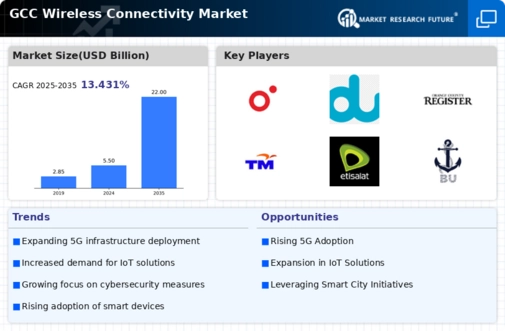The GCC Wireless Connectivity Market has evolved significantly, driven by rapid technological advancements and increasing consumer demand for seamless connectivity. As the region continues to modernize, companies in the wireless communications sector are vying for market share, capitalizing on the rise of mobile internet users and the proliferation of smart devices. Competitive insights reveal a landscape marked by continual innovation, strategic partnerships, and an aggressive push toward enhancing network infrastructure.
Players in this market are not only focused on improving service quality but also on expanding their offerings, including 5G services, IoT solutions, and bundled communication packages, making the GCC a vibrant hub for wireless technology. Ooredoo has established a formidable presence in the GCC Wireless Connectivity Market, leveraging its robust network infrastructure and a customer-centric approach to differentiate itself.
The company's strengths lie in its extensive coverage, high-speed internet services, and a diverse range of offerings, including mobile, fixed-line, and broadband solutions tailored to meet the diverse needs of consumers and businesses alike. Ooredoo focuses on innovation, frequently launching advanced services that include digital payment solutions and IoT applications, which contribute to enhancing customer experience and driving loyalty. Its commitment to sustainability and community engagement further reinforces its position as a preferred choice among consumers in the region.Qatar Telecom, known for its extensive telecommunications services, plays a crucial role in the .
The company provides a comprehensive range of services, including mobile, fixed-line, broadband, and enterprise solutions that cater to both the consumer and business sectors.
Qatar Telecom's strengths lie in its strong technological foundation, enabling it to offer high-quality, reliable connectivity. The company's strategic initiatives, such as partnerships with global technology firms, enhance its capabilities in delivering cutting-edge solutions. In recent years, Qatar Telecom has actively pursued mergers and acquisitions to bolster its market position and expand its service portfolio, further consolidating its foothold in the competitive Gulf region. Through continuous investment in advanced technologies and a focus on customer satisfaction, Qatar Telecom aims to stay ahead in an increasingly competitive market.



















Leave a Comment